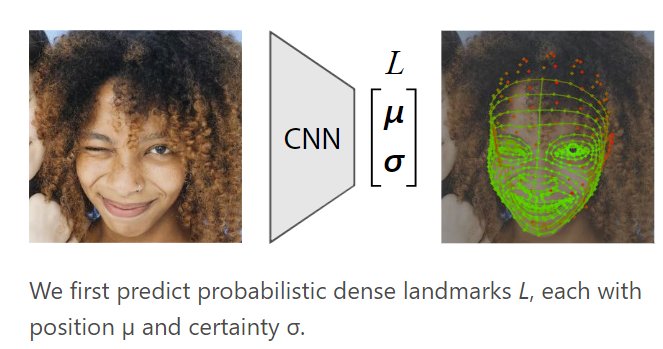3D Face Reconstruction with Dense Landmarks
PubDate: Oct 2022
Teams: Microsoft
Writers: Erroll Wood Tadas Baltrušaitis Charlie Hewitt Matthew Johnson Jingjing Shen Nikola Milosavljevic Daniel Wilde Stephan Garbin Chirag Raman Jamie Shotton Toby Sharp Ivan Stojiljkovic Thomas J. Cashman Julien Valentin
PDF: 3D Face Reconstruction with Dense Landmarks

Abstract
Landmarks often play a key role in face analysis, but many aspects of identity or expression cannot be represented by sparse landmarks alone. Thus, in order to reconstruct faces more accurately, landmarks are often combined with additional signals like depth images or techniques like differentiable rendering.
Can we keep things simple by just using more landmarks?
In answer, we present the first method that accurately predicts ten times as many landmarks as usual, covering the whole head, including the eyes and teeth. This is accomplished using synthetic training data, which guarantees perfect landmark annotations. By fitting a morphable model to these dense landmarks, we achieve state-of-the-art results for monocular 3D face reconstruction in the wild. We show that dense landmarks are an ideal signal for integrating face shape information across frames by demonstrating accurate and expressive facial performance capture in both monocular and multi-view scenarios. Finally, our method is highly efficient: we can predict dense landmarks and fit our 3D face model at over 150FPS on a single CPU thread.


